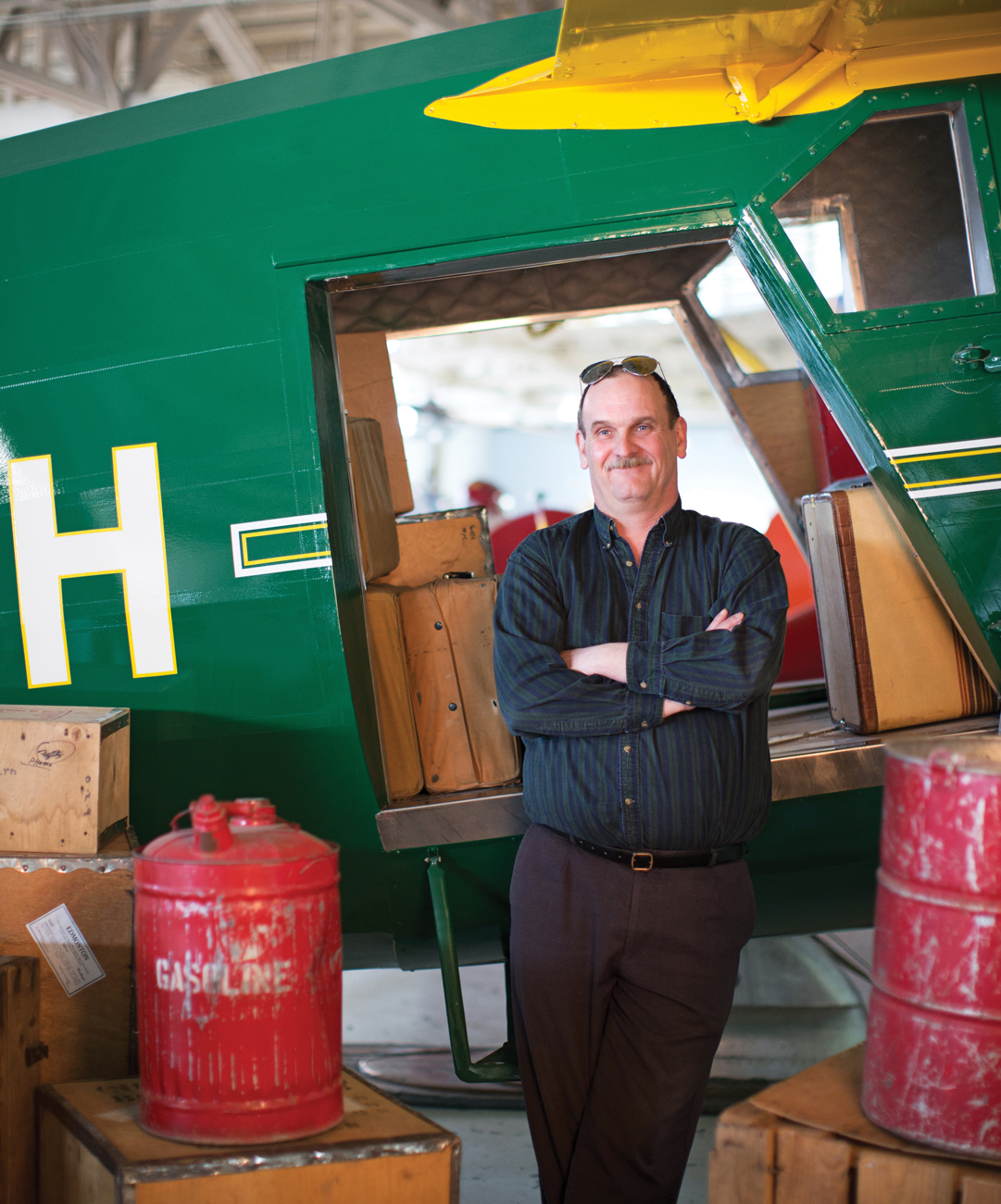Who: Tom Hinderks
Age: 54
Job: Executive Director, Alberta Aviation Museum Association
Experience: Tom Hinderks was only three weeks old the first time he flew in a twin-engine light aircraft, with his father as the pilot. “It’s been a part of my life, all of my life,” he explains. Hinderks’s father was a member of the Royal Canadian Air Force, an instructor and, eventually, a bomber pilot in the Second World War.
His Irish mother was a parachute packer in the Royal Air Force. His father-in-law was a tail gunner in the Second World War, while his daughter was in the air cadets, and went on to become a glider pilot and an ultra-light pilot. “It’s a disease; it’s genetic,” laughs Hinderks, who got his first pilot’s licence when he was only 14. He helped launch the Alberta Aviation Museum as a volunteer and board member more than 20 years ago and became the executive director eight years ago.
- “The hangar the Alberta Aviation Museum is in – Hangar Number 14 – is the last of its kind in the world. It’s a double-wide, double-long British Commonwealth air training plan hangar. The airport that was just closed – the Edmonton City Centre Airport – was the first licensed airport in Canada. It opened in 1927.
- “For most of the 20th century, aviation was one of Edmonton’s huge economic drivers. It was a combination of entrepreneurship, with people like Wilfrid ‘Wop’ May, Grant McConachie, Stan (McMillan) – those folks drove the industry. And because of our location – we’re the last major centre before you enter the north, and because of how we sit on the flight path – we became a focal point for Canada and, in a lot of cases, the world. It gave us things like the name ‘the Gateway to the North’ – that was coined by the Edmonton Journal in the early 1930s, not about Edmonton, but about this airport.
- “The first police pursuit by plane took place in 1919. A very nasty gentleman killed an Edmonton police officer and went on the run. He hopped a freight train heading west. The following morning, an Edmonton city police detective and Wop May got in the Jenny biplane and flew to Edson to head off the train.
- “In the 1940s, during the Second World War, this airport was a huge focal point of what was called the Northwest Staging Route, where thousands of aircrafts came from the United States to Edmonton and then up through the interior of Canada to Alaska and then across to the Soviet Union, and then into combat against the Nazi forces. It drove the economy in a huge, huge way. It made this one of the largest air bases in Canada and, at one point, the busiest in the world. And, at the same time, it was a training base, it was a maintenance base – it had, at that time, Canada’s largest aerospace centre, Northwest Industries, on the site and it supplied the Alaska highways, search and rescue, as well as doing everything it did before the war, with supplying communities, geology, prospecting.
- “Everyone is familiar with air traffic control. It actually began here in Edmonton during the Second World War. There were so many aircrafts coming and going that they needed to put in a control system to keep them from conflicting.
- “Edmontonian Grant McConachie was the head of Canadian Pacific Airlines, which became Canadian Airlines. He’s the guy who established all of the over-the-pole routes to Europe and the Orient that we still use today. And you can see his legacy almost any day in Edmonton when there is a clear sky, because, if you look over the sky, the contrails that cross over the sky are the routes he established back in the 1930s that we still use today. He established routes by using an inflatable globe and a piece of string to prove that the routes were shorter and more direct. He sold the concept to the airlines, the airlines accepted it and we still fly those routes today.
- “In 1929, there was an outbreak of diphtheria in Fort Vermilion, which is about 661 kilometres northwest of Edmonton. The only way to get the diphtheria anti-toxin up north fast enough was by air. So Wilfrid ‘Wop’ May and Vic Horner took a tiny – and I mean tiny, it weighed under 500 kilograms – open cockpit biplane, and flew from Edmonton to Fort Vermilion during a blizzard. Effectively, getting that diphtheria anti-toxin there in time saved the town of Fort Vermilion and Rainbow Lake. It was also the first time that the radio station CHQT broadcast 24 hours. They were followed internationally as the flight took place. Nothing like it had happened before. By the time they got back to Edmonton – imagine, 1929 – there were 10,000 people at the airport to see May and Horner arrive back. They were legends. At the time, pilots were like rock stars today.”
